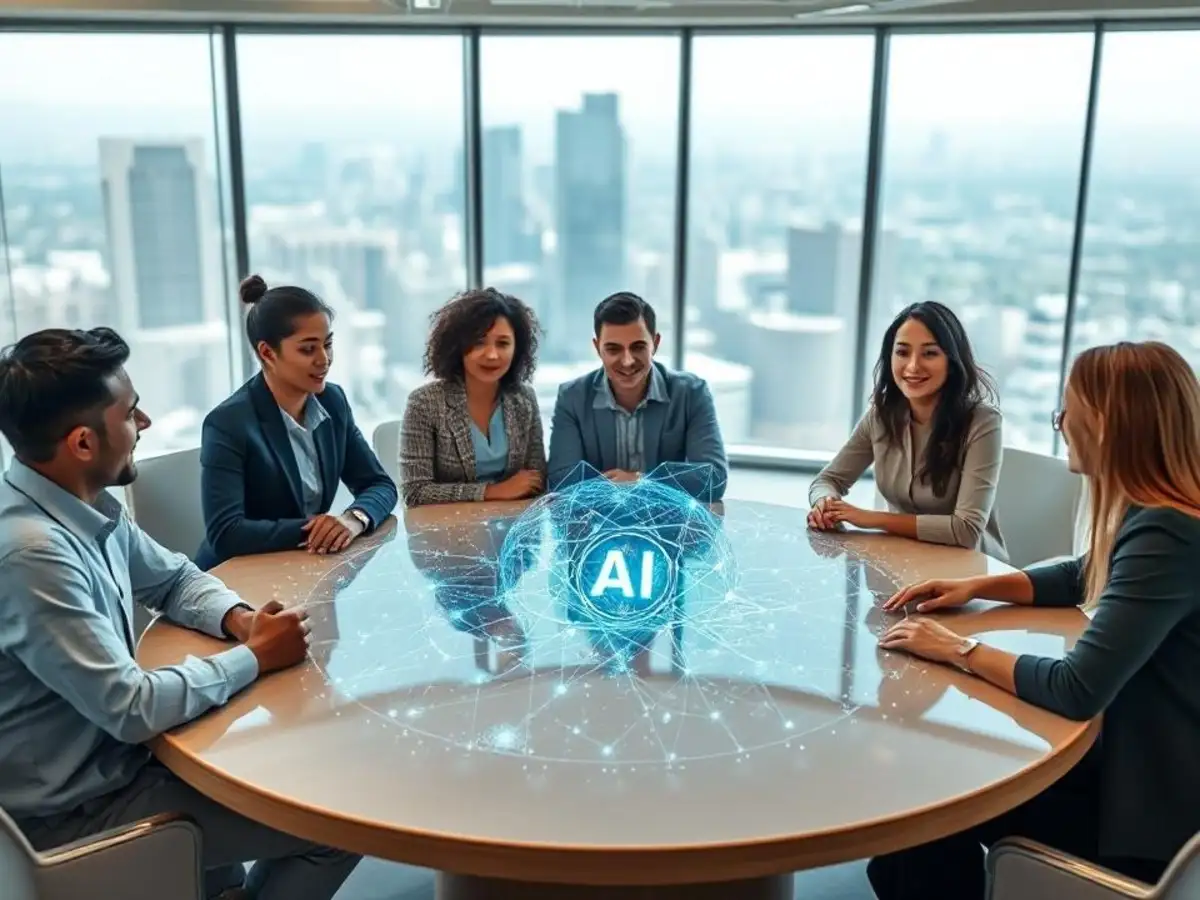The Future Landscape of AI: Innovations, Regulations, and Business Adaptations
Author: AI Research Team

In recent years, artificial intelligence (AI) has rapidly evolved from a niche field to a cornerstone of technological advancement across multiple sectors. With the integration of AI into everyday tools and applications, businesses are embracing this transformative technology to enhance their operations, improve efficiency, and innovate new products. The race to develop AI capabilities has given rise to notable shifts in not just technology, but also in societal norms and regulatory frameworks as governments around the world strive to implement guidelines that ensure the safe and ethical use of AI.
The adoption of AI technologies is becoming increasingly critical for businesses aiming to stay competitive in the digital age. Companies like Apple are leading the charge, announcing significant developments in AI features during events such as the Worldwide Developers Conference (WWDC). For example, Apple's recent updates to their iOS platform highlight a commitment to enhancing user experience through advanced AI implementations, with a focus on privacy and customization. As the integration of AI solutions becomes pivotal, companies are tasked with effectively managing supply chains and operational practices that align with these new technologies.

Apple's iOS 26 announced at WWDC 2025 focuses on privacy and AI enhancements.
However, the rapid development of AI technologies has also prompted concerns about their societal implications. New York State has taken a noteworthy step by passing the Responsible AI Safety and Education (RAISE) Act, which mandates greater transparency and safety measures for frontier AI models. This legislation requires AI labs to release safety reports and to report incidents, establishing a framework that aims to ensure accountability and trust in AI applications. As more states consider similar legislation, businesses must navigate this evolving landscape, balancing innovation with compliance.
The integration of AI into business operations is not merely about adopting technology; it is about rethinking the entire approach to operational efficiency and customer engagement. A multitude of companies—ranging from startups to established enterprises—are being advised on how to effectively leverage AI to enhance their service offerings and streamline internal processes. This has led to a burgeoning demand for skilled professionals who can bridge the gap between AI capabilities and organizational needs. As reported, organizations are increasingly seeking AI trust and safety professionals to manage the risks associated with deploying AI technologies, further underscoring the importance of responsible AI adoption.
In this context, organizations such as Forbes have provided insights on how to transition successfully into AI-driven business models. They emphasize the need for leadership strategies that not only embrace AI but also cultivate a culture of innovation. As each business embarks on its unique journey toward AI integration, the focus must be on building agility and responsiveness to the shifting technological landscape.

The RAISE Act aims to regulate AI innovations for enhanced safety and transparency.
The journey towards AI integration is not without its challenges. Navigating these waters involves addressing ethical considerations and the impact of AI on employment. As companies automate tasks and introduce AI systems, there is an inherent risk of job displacement. The dialogue surrounding this issue is ongoing, with various stakeholders, including politicians, business leaders, and technologists, grappling with the best ways to protect workers while promoting technological progress.
Further complicating matters is the rise of specialized AI applications in niche markets. For instance, the introduction of AI-driven web browsers like Dia seeks to enhance user experience by incorporating chatbot functionalities directly into browsing. This innovation represents a shift in how users interact with technology—moving from passive consumption of information to an interactive engagement model. As these technologies become more prevalent, businesses will need to assess their own digital strategies in order to stay relevant.
In parallel, the discourse on AI ethics has spurred significant interest in business practices that emphasize transparency and accountability. The narrative has shifted towards the development of ethical AI frameworks that accentuate the importance of human oversight in AI operations. As a case in point, companies are increasingly scrutinizing their AI models for biases and inaccuracies, ensuring that the technology does not perpetuate existing disparities.

The development of Idefics2 sets new standards for vision-language AI models.
Prominent AI models—such as Idefics2—are being highlighted as benchmarks for safety and efficiency in vision-language applications. The creators of such models showcase the importance of rigorous red-teaming to identify and rectify weaknesses in AI systems. This proactive stance is crucial for maintaining public trust as AI becomes increasingly integrated into daily life.
Looking ahead, the landscape for AI in business is expected to be dynamic and rapidly evolving. With opportunities for growth in the AI sector, companies that master the integration of these technologies will find themselves at the forefront of innovation. As businesses adapt to these changes, a clear strategic vision and an ethical approach will be essential for long-term success.
In conclusion, as AI continues to shape the future of business and technology, the convergence of innovation, regulation, and operational adaptation will define the next decade. Companies that commit to responsible AI practices will not only navigate challenges but also harness the transformative power of artificial intelligence to create value for their clients, stakeholders, and society at large. The time to act is now—embracing AI could very well determine the leaders of tomorrow in an increasingly competitive marketplace.